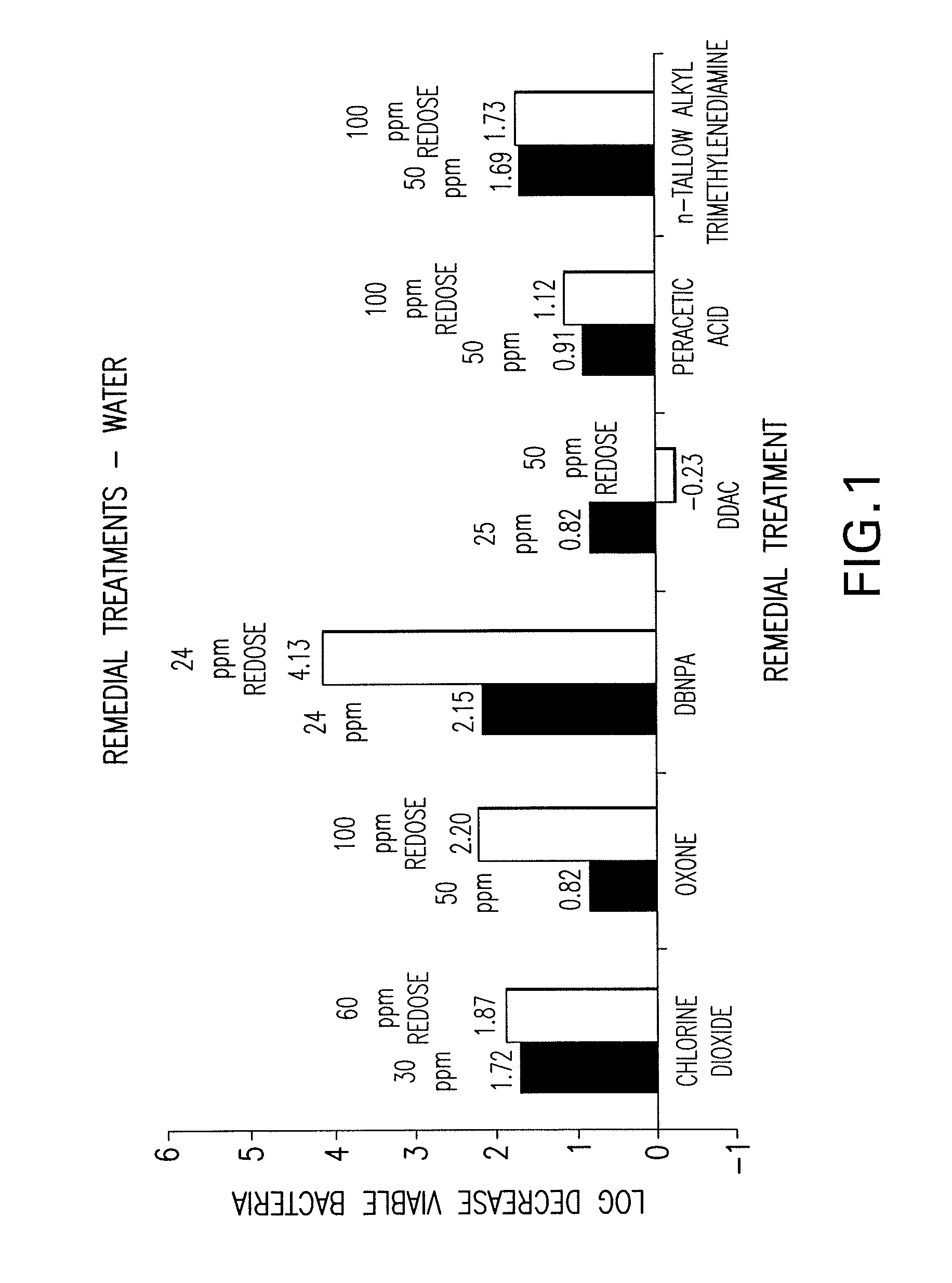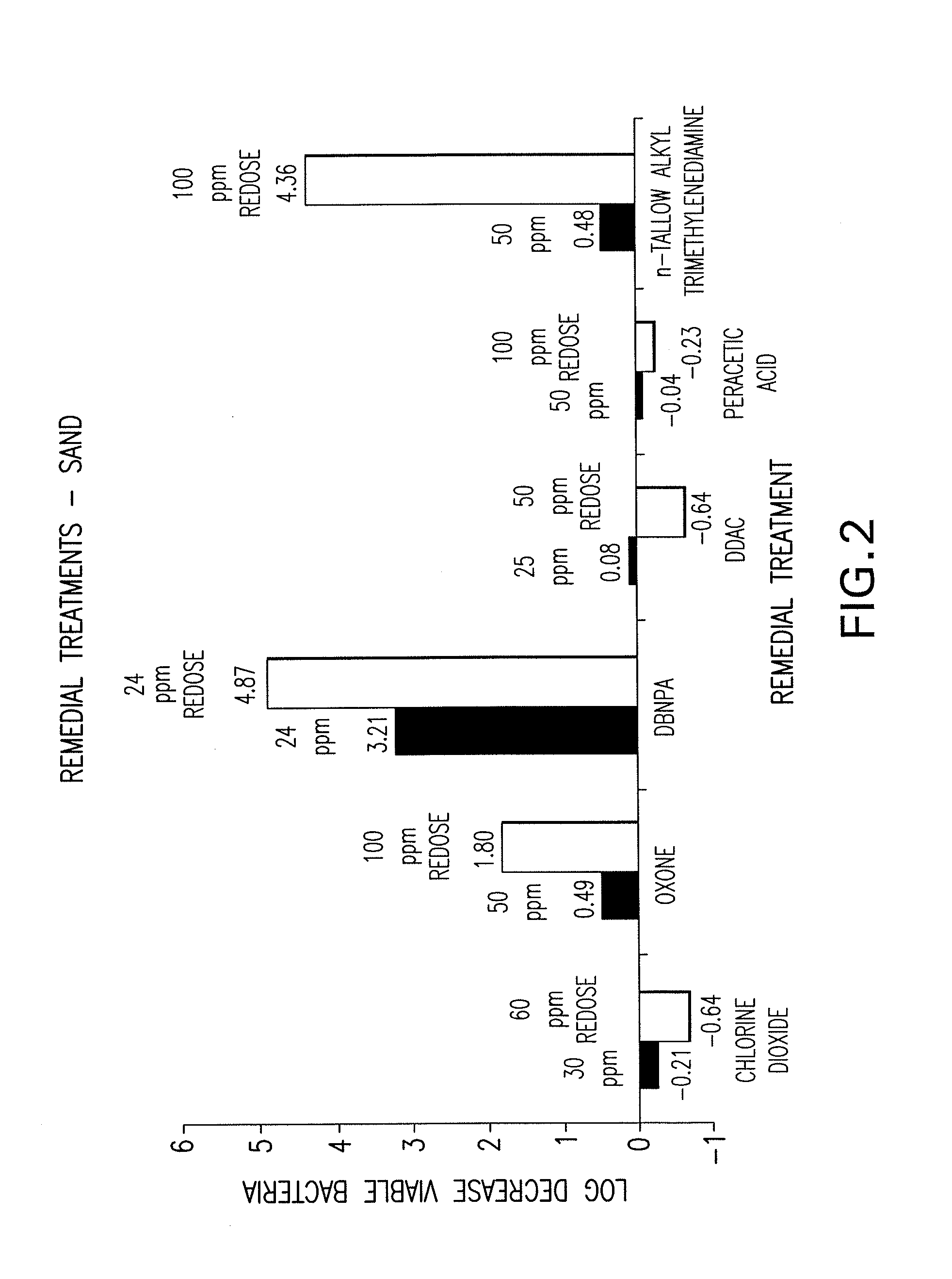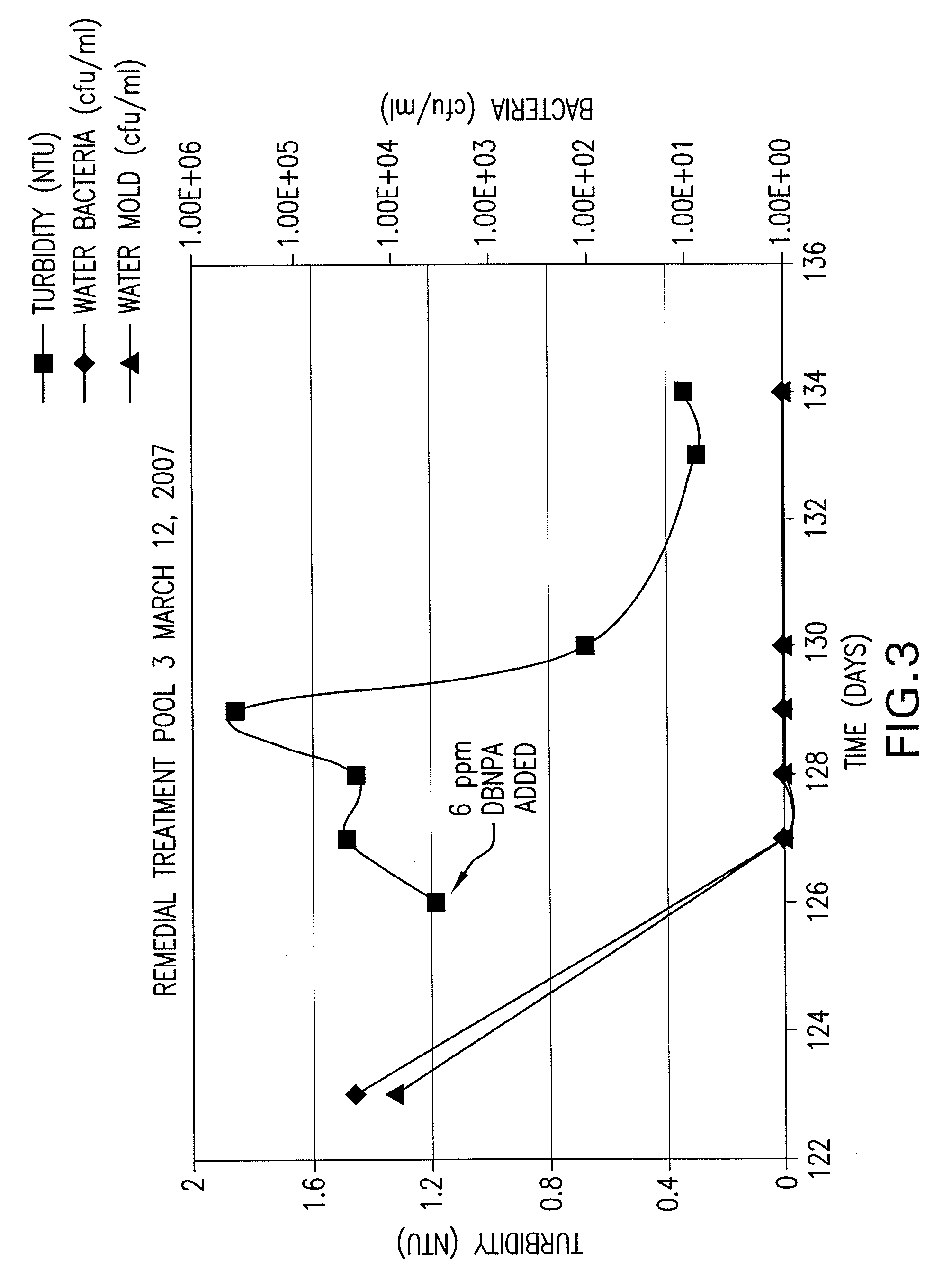Biocidal composition and method for treating recirculating water systems
a technology of biocidal composition and recirculating water system, which is applied in the nature of treatment water, biocide, disinfectants, etc., can solve the problems of biofilm formation, reduced circulation, and high consumption of sanitizer and/or oxidizers
- Summary
- Abstract
- Description
- Claims
- Application Information
AI Technical Summary
Problems solved by technology
Method used
Image
Examples
example 1
Remediation
[0057]Fungal isolates of common fungi found in swimming pools such as Paecilomyces lilacinus and Trichoderma spp. and bacterial isolates also common to swimming pools such as, i.e. Alcaligenes species and Sphingomonas species were used to construct a biofilm, which was treated with biocides, using the following method:
[0058]A mixture of fungal spore suspensions was prepared at a concentration of 3.65×104 / ml in 10% R2A broth. An aliquot of the spore suspension was added to each well of a 96-well plate, except column 12. The plates were incubated for 18 hours at 28° C. Also, a mixture of bacterial suspension was prepared at a concentration of 2.34×105 / ml in 20% R2A broth. An aliquot of bacterial suspension was added to each well of the 96-well plate, where fungal spores were placed. The plates were incubated for 24 hours at 28° C.
[0059]In a new 96-well plate, 6 ppm PHMB solution was added to each well, except column 1 and 12. A 100 ppm solution of biocide or adjuvant was ad...
example 2
Prevention—Secondary Screen
[0065]The secondary screen methodology is based upon a laboratory scale model of a swimming pool. A volume (800 ml) of synthetic swimming pool water (Calcium chloride dihydrate and Sodium hydrogen carbonate solution) is pumped through a body of swimming pool filter sand, by means of a peristaltic pump. The water temperature of each system is maintained in the range of 80-90° F. The purpose of this experiment is to evaluate the robustness or the ability of the single or combinations of the biocides to prevent the microorganisms from establishing colonies in the water and sand filter media, thus preventing the formation of biofilm in the system. The performance of the biocide candidates were determined by the number of days the water clarity was maintained below 1.0 NTU, as well as, the number of bacterial and fungal counts upon exceeding this turbidity reading. It has been demonstrated that when the turbidity exceeds 1.0 NTU there are significant bacterial ...
example 3
Remedial—Secondary Screen
[0075]The secondary screen methodology is based upon a laboratory scale model of a swimming pool. A volume (800 ml) of synthetic swimming pool water (Calcium chloride dihydrate and Sodium hydrogen carbonate solution) is pumped through a body of swimming pool filter sand, by means of a peristaltic pump. The water temperature of each system is maintained in the range of 80-90° F. The systems are allowed to fail resulting in turbid water and heavy bacterial and fungal growth. This is to simulate a swimming pool that has been improperly maintained and has a problem. The purpose of this test is to evaluate the ability of a single biocide or combination of biocides with adjuvants for controlling the organisms present in both the water and the filter sand. Turbidity is not a key measure because the suspended solids are too fine for filtration so they would need to be removed with a separate chemical treatment such as flocculation.
[0076]To the water, chemicals may b...
PUM
| Property | Measurement | Unit |
|---|---|---|
| concentration | aaaaa | aaaaa |
| concentrations | aaaaa | aaaaa |
| corrosion | aaaaa | aaaaa |
Abstract
Description
Claims
Application Information
 Login to View More
Login to View More - R&D
- Intellectual Property
- Life Sciences
- Materials
- Tech Scout
- Unparalleled Data Quality
- Higher Quality Content
- 60% Fewer Hallucinations
Browse by: Latest US Patents, China's latest patents, Technical Efficacy Thesaurus, Application Domain, Technology Topic, Popular Technical Reports.
© 2025 PatSnap. All rights reserved.Legal|Privacy policy|Modern Slavery Act Transparency Statement|Sitemap|About US| Contact US: help@patsnap.com



